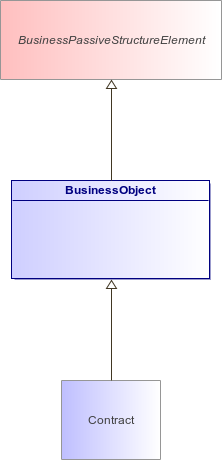
ArchiMate Metamodel
The ArchiMate language in general focuses on the modeling of types, not instances, since this is the most relevant at the Enterprise Architecture level of description. Hence a business object typically models an object type (cf. a UML class) of which multiple instances may exist in operations. Only occasionally, business objects represent actual instances of information produced and consumed by behavior elements such as business processes. This is in particular the case for singleton types; i.e., types that have only one instance.
A wide variety of types of business objects can be defined. Business objects are passive in the sense that they do not trigger or perform processes. A business object could be used to represent information assets that are relevant from a business point of view and can be realized by data objects.
Business objects may be accessed (e.g., in the case of information objects, they may be created, read, written) by a business process, function, business interaction, business event, or business service. A business object may have association, specialization, aggregation, or composition relationships with other business objects. A business object may be realized by a representation or by a data object (or both).
The name of a business object should preferably be a noun.
